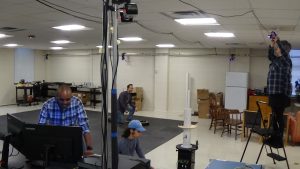Research

We hope that everyone is staying safe and healthy during the COVID-19 pandemic.
The Taylor lab is moving! We are now located at Case Western Reserve University. Updated web details to come soon!
Broadly speaking, our research interest lies in biology and biologically inspired engineering and robotics. At its core, engineering is about developing solutions to problems. At the same time, biology is about studying the solutions that organisms have evolved to survive. Many engineering applications deal with perception (e.g., sensing, processing, data fusion, and knowledge representation), action (e.g., guidance, navigation, dynamics/control), and adaptation (e.g.,learning). Nature offers existence proofs of these traits in animals, which must routinely and correctly perceive, act in, and adapt to their environments to forage, survive, and reproduce. Since animals successfully perceive, act, and adapt in the world, a better understanding of how animals employ these concepts may reveal insights and principles that can be leveraged to develop improved engineered systems. At the same time, the advances that are continuously being made in engineering can be applied to study and answer biological questions in new and exciting ways. Ultimately, our goal is to use engineering and mathematics to advance the knowledge-base and understanding of biology and animal behavior, while simultaneously leveraging the design principles observed in biology to develop new and improved engineered systems while enhancing and expanding the engineer’s toolkit.
Our current research focuses on animal magnetoreception and navigation. A wide variety of animals use the earth’s magnetic field to accomplish navigational feats that range from local homing to long distance migration on the scale of continents, and ocean basins. Despite extensive work in this area, animal magnetic reception remains enigmatic. At the same time, the engineering community has shown interest in using magnetic reception to develop navigation methods that are less reliant on man-made navigation reference systems (e.g., GPS), and can function underwater. Put simply, many animals are born with the ability to accomplish navigational tasks that parallel the goals of man-made systems. Our work explores 1) how animals sense, process, and use earth’s magnetic field to navigate from one point to another, and 2) how the principles at play in animals might be leveraged to develop improved autonomous engineered systems.
This quad chart illustrates why our work is important, and how it maps to different areas at Carolina, and in the world!

